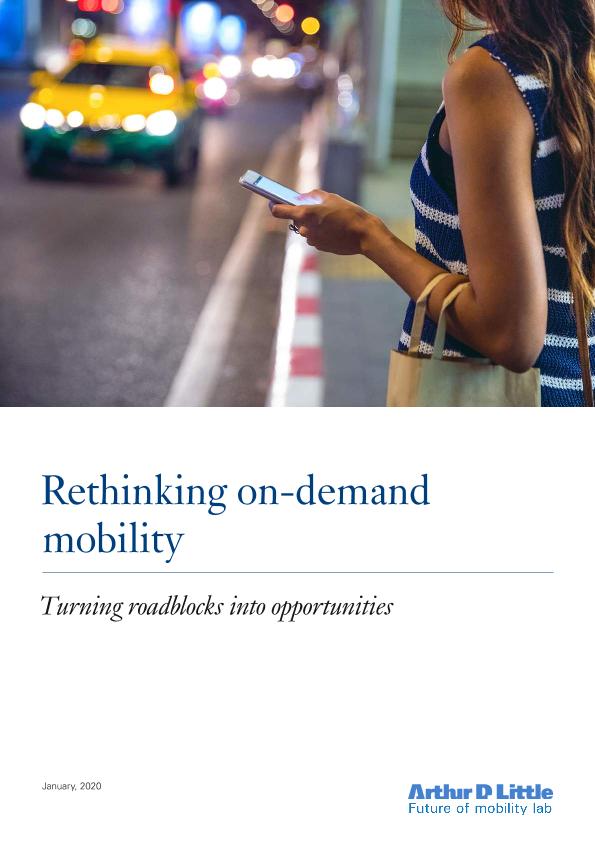Rethinking on-demand mobility

Contenido multimedia no disponible por derechos de autor o por acceso restringido. Contacte con la institución para más información.
| Tag | 1 | 2 | Valor |
|---|---|---|---|
| LDR | 00000cam a22000004b 4500 | ||
| 001 | MAP20200019022 | ||
| 003 | MAP | ||
| 005 | 20220912143714.0 | ||
| 008 | 171108e20200101esp|||| ||| ||eng d | ||
| 040 | $aMAP$bspa$dMAP | ||
| 084 | $a922.111 | ||
| 245 | 1 | 0 | $aRethinking on-demand mobility$cFrançois-Joseph Van Audenhove...[Et. al] |
| 260 | $aMadrid$bArthur D. Little$c2020 | ||
| 300 | $a24 p. | ||
| 520 | $aWe love them and we hate them. Enabled by ubiquitous connectivity, ever more powerful smartphones, and cloudhosted applications, private on-demand ride-hailing platforms called transport network companies (TNCs) in the United States have changed the urban mobility landscape for good. In the space of a decade, companies such as Uber, Lyft and DiDi have become globally recognized brand names and multi-billion-dollar businesses. They started out by targeting young, affluent and digital-savvy consumers but, over time, succeeded in attracting the population at large by providing flexible, fast, door-to-door mobility solutions that were also safer and mostly cheaper. It is not all good news, of course. The onerous working conditions of their drivers have created controversy, and their business model has still to prove its financial sustainability. | ||
| 650 | 4 | $0MAPA20140009749$aConectividad | |
| 650 | 4 | $0MAPA20090014190$aMovilidad urbana | |
| 650 | 4 | $0MAPA20110024864$aModelos de negocio | |
| 650 | 4 | $0MAPA20120009134$aAplicaciones móviles | |
| 650 | 4 | $0MAPA20080586546$aNuevas tecnologías | |
| 650 | 4 | $0MAPA20120007895$aDispositivos móviles | |
| 650 | 4 | $0MAPA20080554866$aInnovación | |
| 700 | 1 | $0MAPA20200013358$aVan Audenhove, François-Joseph | |
| 710 | 2 | $0MAPA20080440602$aArthur D. Little |

